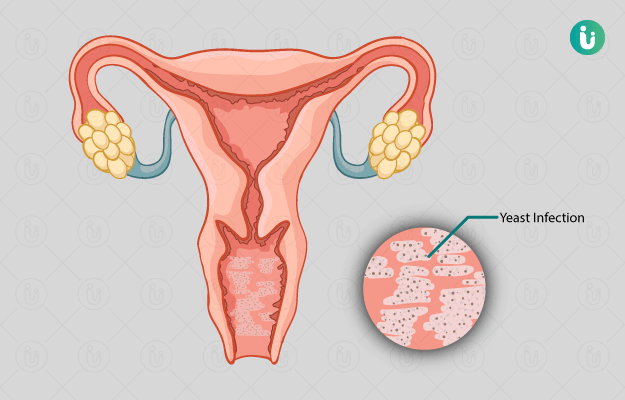What is a candidal infection?
Candidal infection is one of the most common fungal infection that can affect many parts of the body. In some conditions, Candida can also cause systemic infection (including the entire body), which can lead to serious conditions. There are three major types of candidal infections:
- Infection of the oesophagus, throat, and mouth.
- Genital candidal infection (Read more: Vaginal yeast infection treatment)
- Invasive candidal infection. There are more than about 20 species of Candida with Candida albicans being the most common cause of infections.
What are its main signs and symptoms?
Symptoms of candidal infection can vary based on the part of the body infected. The commonly seen signs in all types of candidiasis are listed below:
- Infection of the hair follicles that appear like acne
- Reddish, itchy skin rash
- Rashes on the genital area, mouth, under the breasts, skin folds and other regions of the body depending upon which part is infected
What are its main causes?
The candidal infection of the skin is widespread and can occur in any area of the body, but mostly affects parts that are moist and with skin folds. The causes of skin infection are as follows:
Though Candida commonly affects the moist areas of the skin like the armpits and groin, it can also affect the nails and corners of your mouth. Vaginal and oral candidiasis usually occur due to antibiotic therapy. It is also seen in individuals with weakened immune systems like individuals with HIV infection.
How is it diagnosed and treated?
Candida infection is generally diagnosed by scraping off the skin of the affected area and testing it for the presence of microorganisms. Individuals should be tested for blood sugar level if candidiasis is detected. High blood sugar level acts as food for the fungus and helps it grow.
Treatment of any candidal infection involves the following:
- Maintain proper health and hygiene which is the primary requirement in the treatment
- Application of absorbent powders to the moist areas of your skin can help in preventing as well as treating candidiasis
- Keep your skin exposed to sunlight
- Maintain your blood sugar level in the normal range
- Your doctor may prescribe topical antifungal creams and ointments which can help you treat the condition
- In case of severe candidiasis, oral antifungal therapy is also prescribed by the doctor.

 Doctors for Candidal Infection
Doctors for Candidal Infection  OTC Medicines for Candidal Infection
OTC Medicines for Candidal Infection


















